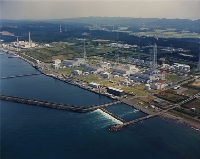Japan has moved a step closer to restarting the first of its nuclear reactors to be kept off line for tests following the Fukushima accident. Meanwhile, details on the country's revamped nuclear regulatory regime are starting to emerge.
 |
| Unit 6 at Kashiwazaki Kariwa closed for inspections on 26 March, leaving only one reactor operating in Japan (Image: Tepco) |
All of Japan's nuclear power plants have been required to undergo two-phase stress tests following the March 2011 Fukushima Daiichi nuclear power plant accident. The initial tests to examine the safety margin of important pieces of equipment are carried out while reactors are shut down for inspections, and determine whether the Japanese government will allow the reactor to resume operations. The second phase of the tests is to involve an overall evaluation akin to the stress tests carried out in the European Union and elsewhere, not requiring reactors to be shut down while tests are carried out.
As no Japanese reactor has yet been given the go-ahead to resume operations, this has meant that every reactor that has gone off line in Japan since March 2011 has remained off line. Tepco's last operating reactor, Kashiwazaki Kariwa 6, has now entered its scheduled outage, leaving Hokkaido Electric's Tomari 3 as the sole Japanese nuclear power reactor to remain in operation.
Ohi unit 3 was the first Japanese nuclear power plant to complete the first step of the mandatory stress tests in October 2011 and Ohi 3 and 4 were the first to receive NISA and now NSC approval. However, a final decision on allowing the units to restart will require approval from the local prefecture.
Regulatory regime revealed
Japan's Ministry of Economy, Trade and Industry (METI) has revealed its vision for a new nuclear regulatory regime that will see regulatory functions enshrined within a new, independent body. The Nuclear Regulatory Authority (NRA) will be an external body of the Ministry of Environment and will unify relevant functions from different existing ministries.
Currently, Japan's nuclear industry is regulated by NISA, itself part of METI. NISA is overseen by the NSC, which is itself responsible for formulating safety policy, and the Atomic Energy Commission, which is responsible for nuclear power and research policy. The NSC and Atomic Energy Commission are both part of the Cabinet Office.
Shortcomings in Japan's regulatory regime identified after Fukushima prompted the government to announce in August 2011 that it would develop a new regulatory structure. NISA's location within METI was seen as compromising its independence and fostering a potential conflict of interest for METI as both promoter and regulator of nuclear energy.
The NRA will have its own independent staff of 500 and a budget of ¥50 billion (about $600 million). Also coming under the remit of the Ministry of the Environment will be the Nuclear Safety Investigation Committee (NSIC), which will review the effectiveness of the NRA and be responsible for the investigation of nuclear accidents.
The new regime was outlined in a presentation by METI deputy director general for nuclear safety regulation reform Masaya Yasui.
Researched and written
by World Nuclear News




_18570.jpg)
_16159.jpg)
_18938.jpg)
_33584.jpg)





